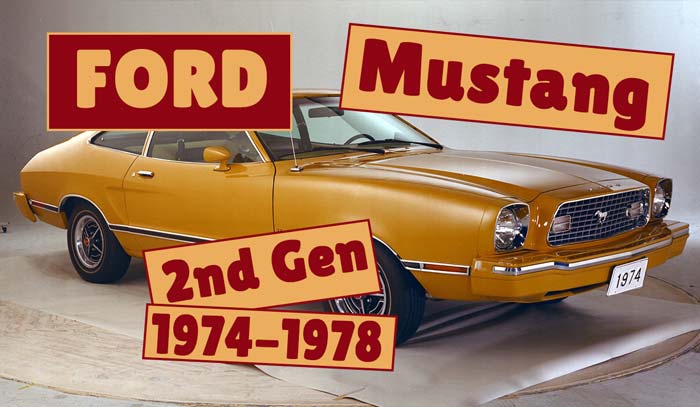Ford Mustang 2nd Generation Origin
The Ford Mustang second generation, also known as the “Mustang II,” was produced from 1974 to 1978 and was a direct successor to the Ford Mustang first generation. Beginning in 1967, the Mustang had a problem in that it was becoming too large for a period when compact automobiles were gaining traction. The president of Ford Motor Company then ordered a smaller and less fuel-efficient Mustang for the 1974 model year.
The newly developed model was introduced in 1973, two months before the oil crisis. Because of its small size, the model was able to compete with other successful foreign sport coupes brought in, such as the Toyota Celica, European Ford Capri, and Japanese Datsun 240Z.
Owners of 1974 Mustangs had to choose between a V6 engine and a four-cylinder engine, both of which produced unappealing horsepower values of 92 and 105, respectively. Stay with me until the end as we explore more interesting aspects of this ride before you decide how awesome the Ford Mustang II truly was.
Ford Mustang 2nd Generation Overview
In the early 1970s, the Mustang market experienced a drop in sales. Iacocca, who became Ford’s president in December 1970, pushed for a more compact 1974 Mustang after he took office. Later, what Ford created was very small and trim; it was based on the subcompact Pinto rather than the compact Maverick or medium-sized Torino and was available as a hatchback or notchback.
The new Ford Mustang II was 19 inches shorter in height and 900 pounds lighter than the outgoing 1973 Mustang. Less than a month before the Ford Mustang II hit the market, the Arab oil organization abruptly raised gasoline prices and reduced production.
Many countries, including the United States, have banned oil exports. During the fuel crisis, Ford benefited from this by developing a car that gets 20 miles per gallon. The final Mustang II manufacturing design, based on the Ford Pinto, was to begin in 1971 under Dick Nesbitt.
The two available body styles were the sportier three-door “2+2” hatchback, also known as a liftback, and the two-door notchback coupe. A folding rear seat was optional on the notchback coupe but standard on hatchback models. Following the period commentators, “2 + 2” also precisely explained the rear seat capacity. The weight distribution of a 1974 V6-equipped car was front-heavy, with 58 percent of its mass over the front wheels. The Mustang II was the first American vehicle to feature pinion steering and a power-assist rack.
Ford Mustang 2nd Generation Production
The Mustang II is known for its strong sales and market foresight due to the oil crisis and political climate, having sold over 1.1 million units in four years and being named Motor Trend’s 1974 Car of the Year. The hatchback, Ghia, Mach 1, and hardtop were all available in 1974.
For 1975, changes included an “MPG” model with a different rear axle ratio for fuel efficiency. The “Stallion” trim package was added in 1976. Mach 1 remained in service from 1974 to 1978. Other performance and styling changes included a “Cobra II” version in 1976–1978 and a “King Cobra” in 1978, of which approximately 4,972 were built.
All trim levels of the 1977–1978 hatchback models were now available with the T-top roof option, which included a leatherette storage bag on top of the spare tire hump.
Ford Mustang 2nd Generation Price
After going over these intriguing details, we can now proceed to discuss the vehicle’s pricing in the marketplace for automobiles. The market value of a 1978 Mustang II King Cobra is surprisingly close to what it was back then. Some sell at auction for around $7,000, which is quite decent for a vehicle with a feature set so rare that it was never officially produced.
In general, the second-generation Mustang costs around $16,332.




